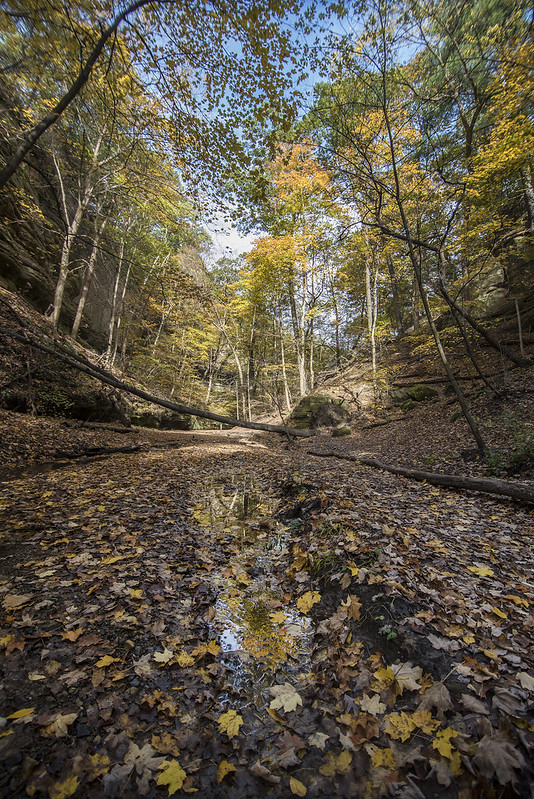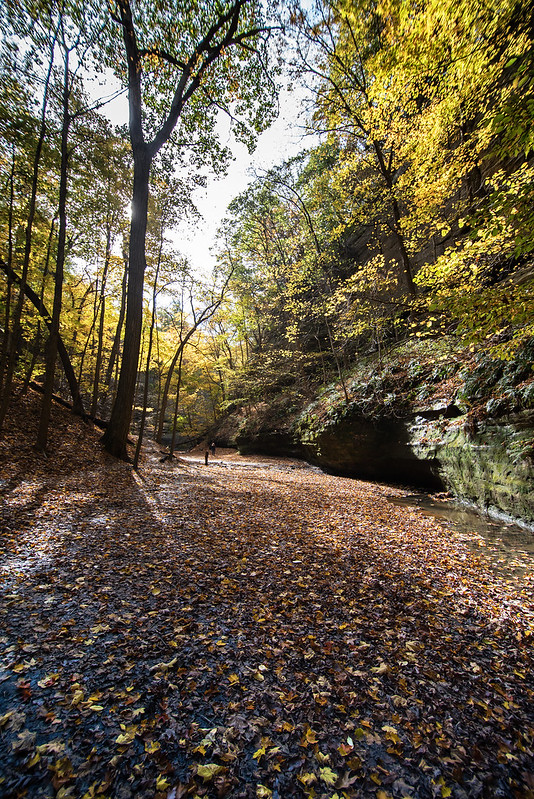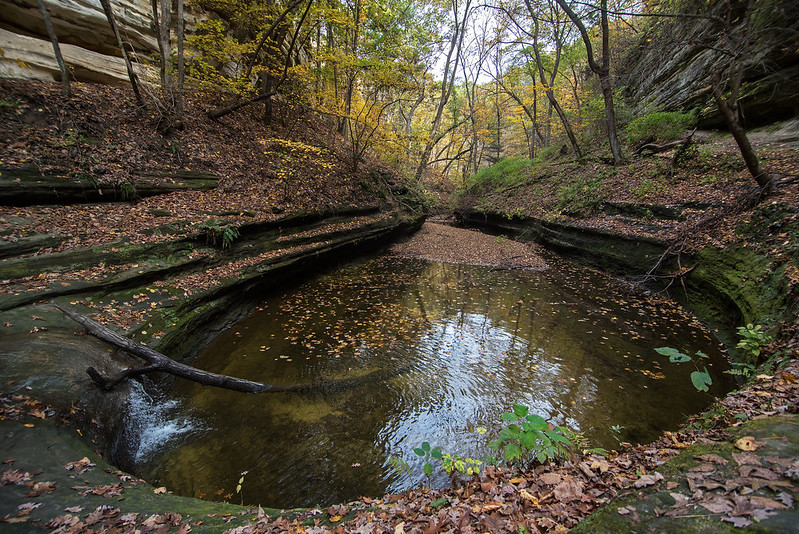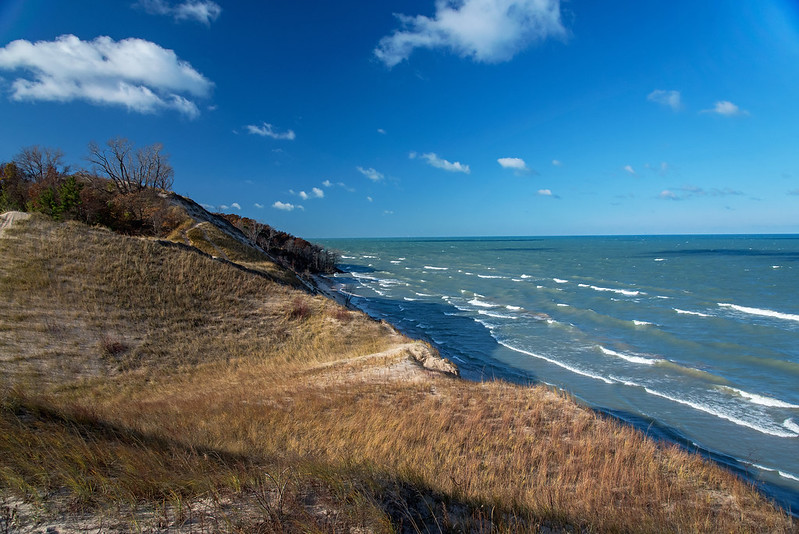
A morning hike along the tops of the fore dunes was a great way to start Thanksgiving weekend. Despite the cold temperatures and very windy conditions, we enjoyed the time away from people shopping in earnest for black Friday bargains - they can browse the aisles while we browse the treetops and meandering trails.
The fore dunes are the first line of dunes from the shore. Over the past few decades, these have taken a hit by erosion. Much of the beach below is now underwater, making it difficult to walk on the beach during days with high waves. This is a natural process, that has taken place since the dunes were built by winds, in fact, it's the same process that created the dunes. The dunes change by the day in some places, other places remain untouched for centuries. These are the places where trees take hold and form conifer forests or oak savannas. The winds will probably bury them in time too.
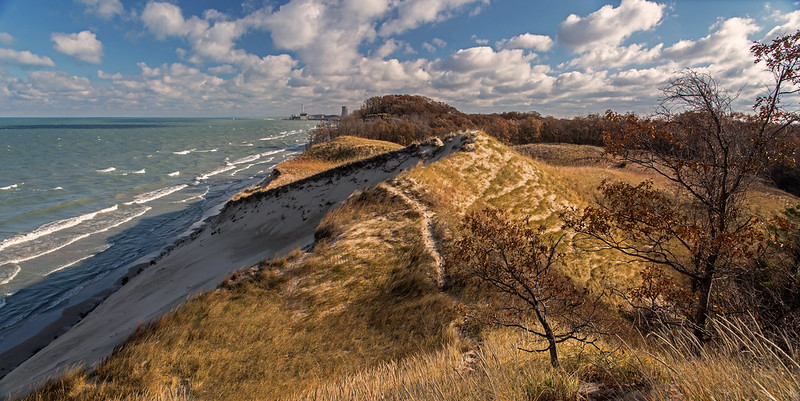
Looking closely at the beach below, we saw two other people on the beach. They are barely visible in the photo above, just emerging from the trees along the shore. I find very few people on the shore in cold weather. I'm often the only person in view for miles around when I visit this place in the winter, and I enjoy the solitude. On calm days, the quiet creates an eerie environment where you feel completely alone, yet you're only a few miles from a busy city, and 40 miles across Lake Michigan to the third largest metropolitan city in America.
We're lucky to have this area set aside for us so close to the bustling cities.
 The high winds and cold temperatures reminded us that winter is approaching. While standing on top of the fore dunes, we felt the full brunt of the weather, but just over the ridge the winds were blocked, and temperatures were much more tolerable. On windy days, the beach all but disappears, so it's a perfect time to explore the secondary dunes, and the nearby woods. Most visitors are attracted to Lake Michigan and the beaches along the shore, but there are so many other aspects of the Indiana Dunes National Lakeshore that can't be found anywhere else in the area. These are the places I like to explore.
The high winds and cold temperatures reminded us that winter is approaching. While standing on top of the fore dunes, we felt the full brunt of the weather, but just over the ridge the winds were blocked, and temperatures were much more tolerable. On windy days, the beach all but disappears, so it's a perfect time to explore the secondary dunes, and the nearby woods. Most visitors are attracted to Lake Michigan and the beaches along the shore, but there are so many other aspects of the Indiana Dunes National Lakeshore that can't be found anywhere else in the area. These are the places I like to explore.
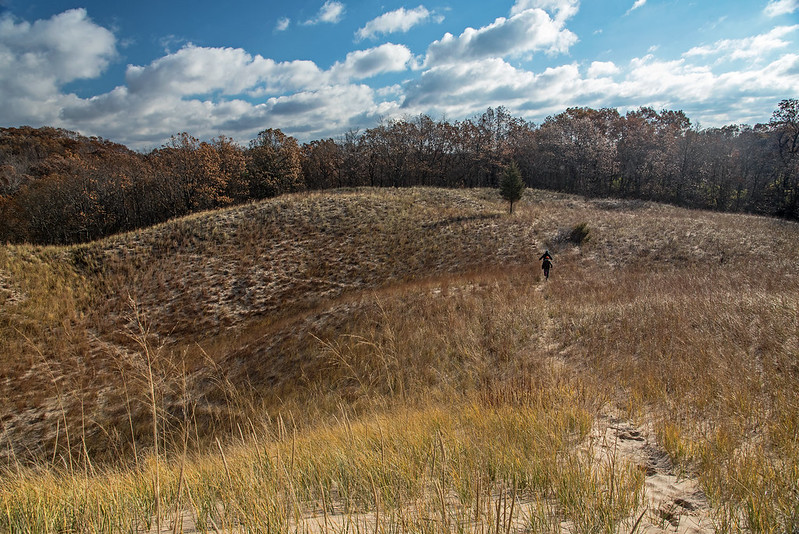 Certain areas of the park show a perfect dune progression from beach to forest; West Beach is one example. But the progression can be seen to some extent at all the beaches. It's these unusual areas that attract me, the woods that seem to begin at the foot of a grassy dune, almost as if they were planted by hand, purposefully. Why are there single conifer trees in the middle of a Marram grass meadow? These landmarks can be seen from quite a distance, and are often the target of our hikes.
I've explored the dunes for many years, most weekends each year, and I still find new things to explore. What's also interesting is the change that takes place over time to places I visit, things are rarely the same twice.
Certain areas of the park show a perfect dune progression from beach to forest; West Beach is one example. But the progression can be seen to some extent at all the beaches. It's these unusual areas that attract me, the woods that seem to begin at the foot of a grassy dune, almost as if they were planted by hand, purposefully. Why are there single conifer trees in the middle of a Marram grass meadow? These landmarks can be seen from quite a distance, and are often the target of our hikes.
I've explored the dunes for many years, most weekends each year, and I still find new things to explore. What's also interesting is the change that takes place over time to places I visit, things are rarely the same twice.



